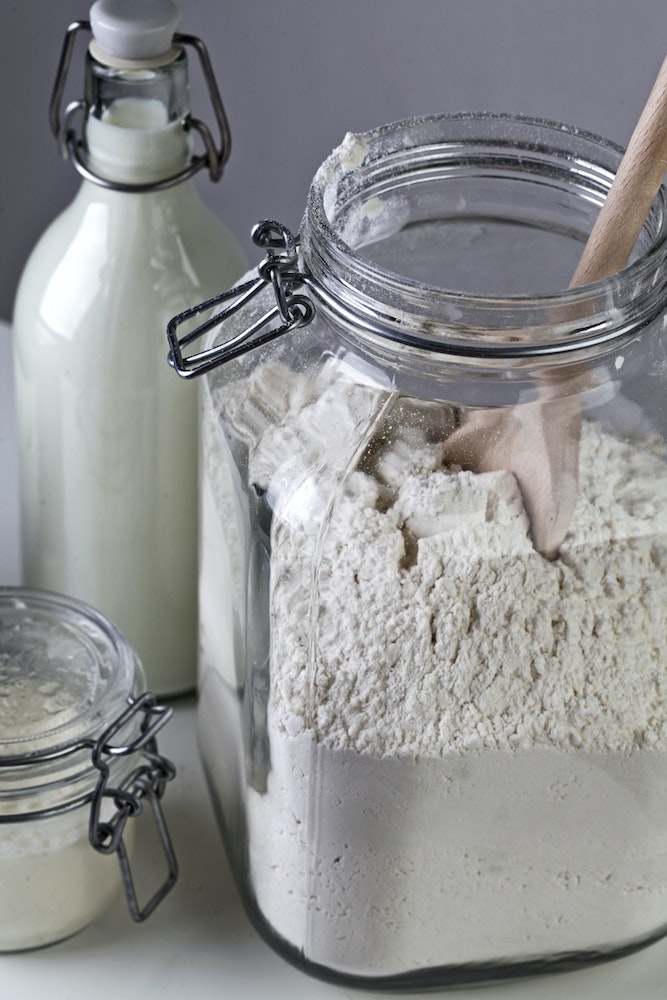
A blog post about measuring flour?!
I know what you’re thinking. What’s this even about? How can you possibly measure flour wrong? Don’t you just… measure it?
Actually, a lot of well-known bakers say that one major area where novice bakers go wrong is measuring flour! Especially when you’re working with a finicky recipe, like bread, it’s super important to get an accurate measurement of flour.
Even more forgiving recipes can have issues if you measure incorrectly.
So what’s wrong with too much flour?
This can result in dry, dense baked goods.
Cookies and brownies can become too cakey. If you prefer this texture, you may purposefully add more flour to your recipes! But if you want the texture of the original, it’s important to measure accurately.
When you’re kneading bread, it can be tempting to keep adding flour to your countertop. This makes your dough less sticky and easier to work with. However, too much flour can alter the final texture, and you should only add flour if your dough seems too wet.
What’s wrong with too little flour?
Too little flour can make baked goods lack shape or have too wet or dense of a texture.
The gluten in flour helps baked goods keep their texture, so you may end up with shapeless bread or flat cookies. Your baked goods may also collapse while in the oven.
So basically, using the correct amount of flour while baking is super important. But the question remains…
How do you scoop flour?
Let’s go over the three main ways you can measure flour, from best to worst.
The Best Method: Measure Flour By Weight
The best method by far is measuring by weight. Using a scale will give you exactly the same amount every time, no matter how you scoop the flour!
For reference, a standard cup of flour is 120 grams, or 4.4 ounces (the exact weight may vary depending on the type of flour, but this is the weight I use for a cup of flour). When you measure by weight, you can get a perfect 120 gram cups of flour every time!
You’ll need to invest in a small kitchen scale for this, like the one shown in my pictures. They’re not too expensive; I got mine for about $15, and it’s absolutely changed the way I bake.
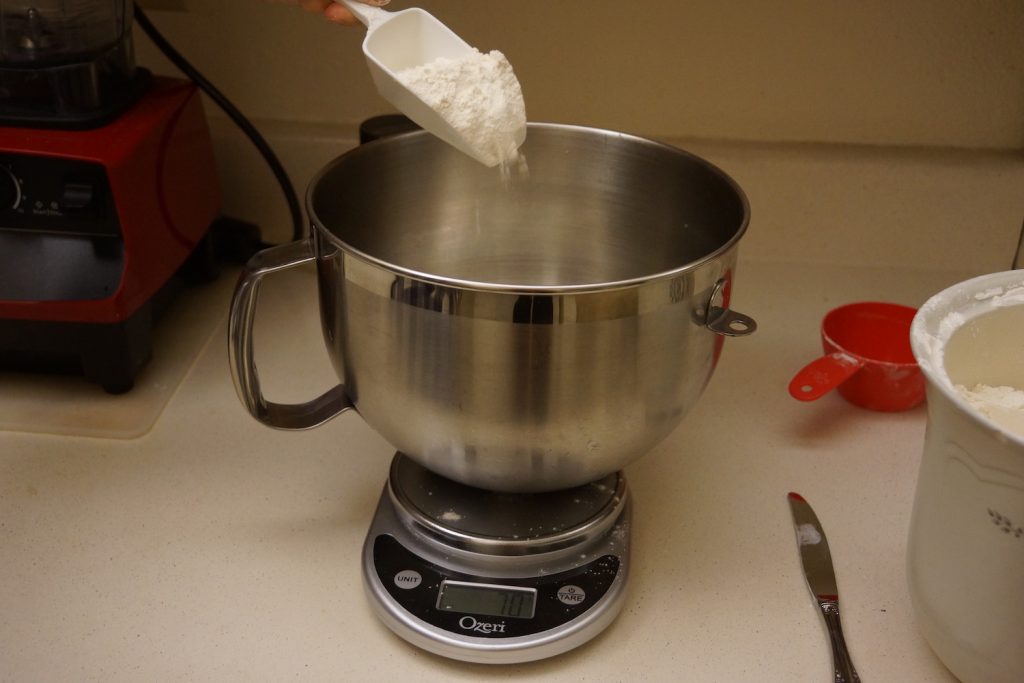
Using a kitchen scale is simple. Just put your bowl on the scale (remember to hit the ‘tare’ button to reset the weight in order to start weighing your ingredients from 0 grams). Next, scoop or pour flour until the number on the scale hits the amount you need for the recipe.
Not only is it more accurate, it’s also faster. If your recipe calls for a lot of flour (I frequently make breads that need 500 grams of flour), you can pour straight from the bag. It really saves a lot of time.
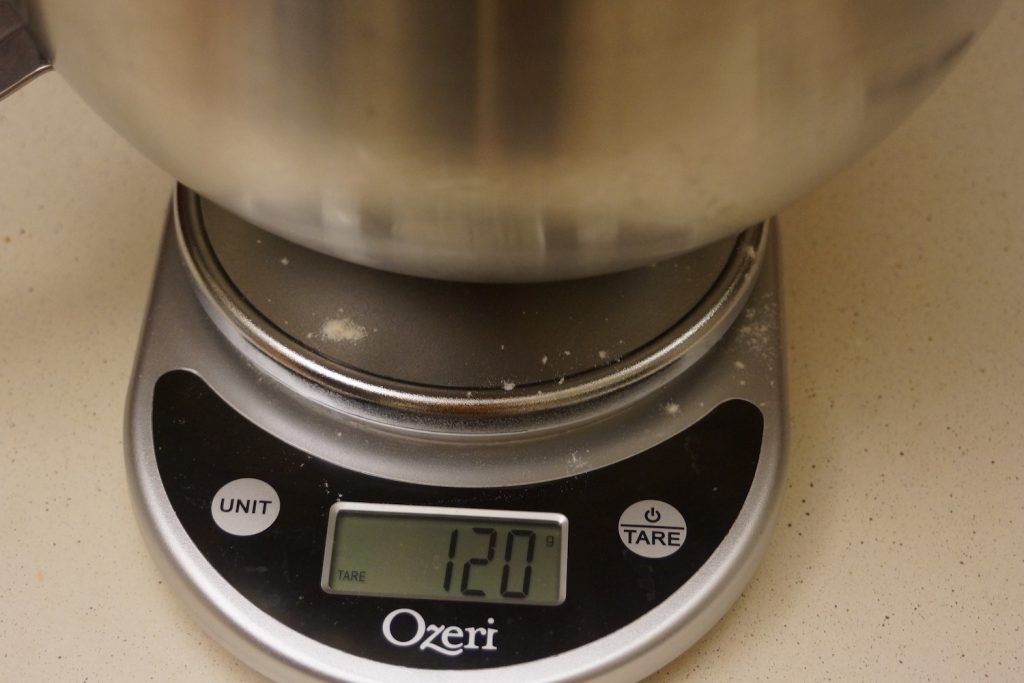
One caveat: you may run into recipes that measure by volume (cups, teaspoons, etc.) rather than metric weight, especially if you’re American. In this case, if you want to use your scale, you would have to convert all your ingredients to metric. And since every ingredient weighs differently (for example, a cup of sugar weighs more than a cup of flour), converting to metric takes time.
While I love my kitchen scale, if I’m using a recipe that calls for cups, I don’t bother converting to metric. Most recipes will turn out fine if you’re a few grams of flour off!
The Second Best Method: Scooping Flour Into A Measuring Cup
If you’re an American, you’re probably used to using a scoop and putting the flour into a measuring cup (that is, measuring by volume). This isn’t one-hundred percent accurate, but it’s still the best method to use if you don’t have a kitchen scale.
By scooping it into a cup, you won’t compact the flour. This means you’ll end up with a decently accurate measurement. Just be sure not to tap your measuring cup or press down on it with the scoop! This can make the flour settle or compact, and you may end up using more than you need.
To use this method, just place the flour gently into the cup with a scoop or a spoon.
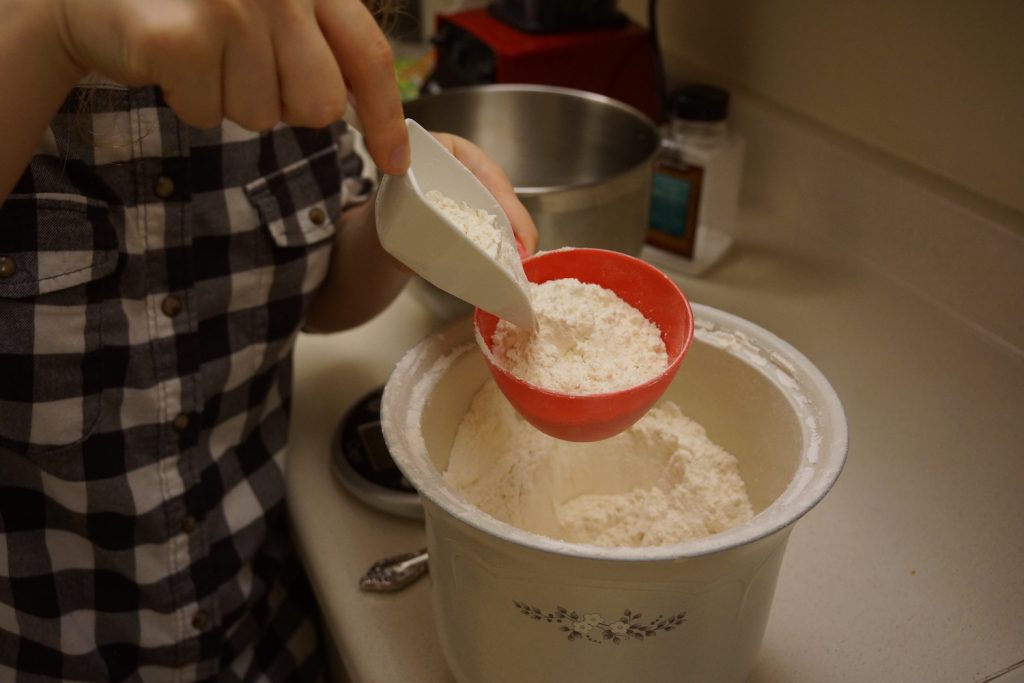
Level it off with the back of a knife, leaving a flat top.
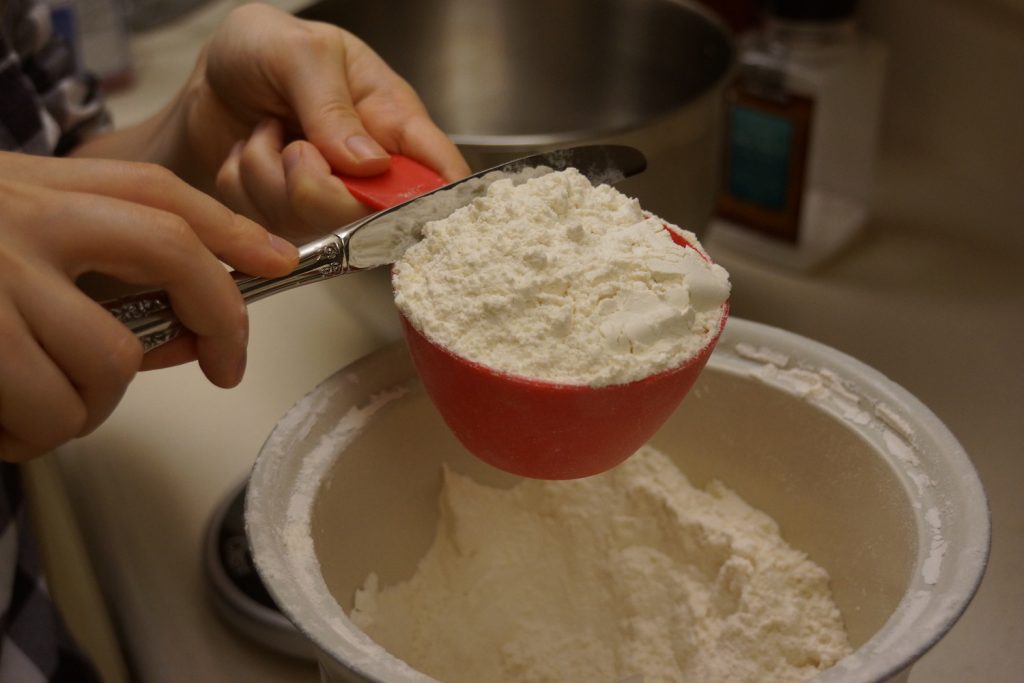
In this test, my cup of flour weighed 128 grams, or 8 grams more than a standard cup of flour. That’s pretty accurate! In most recipes, being off by a few grams of flour isn’t going to change the outcome.
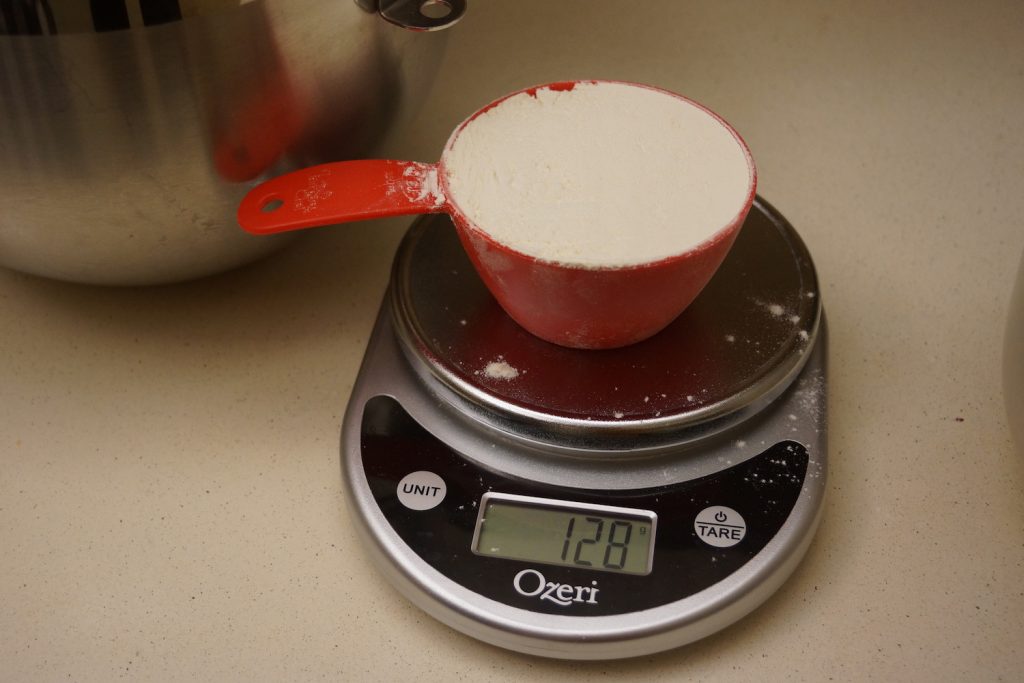
Worst Method: Scooping Straight From The Flour
Putting the measuring cup directly into the flour and scooping up a whole cup is definitely the most inaccurate method. Please don’t do this!
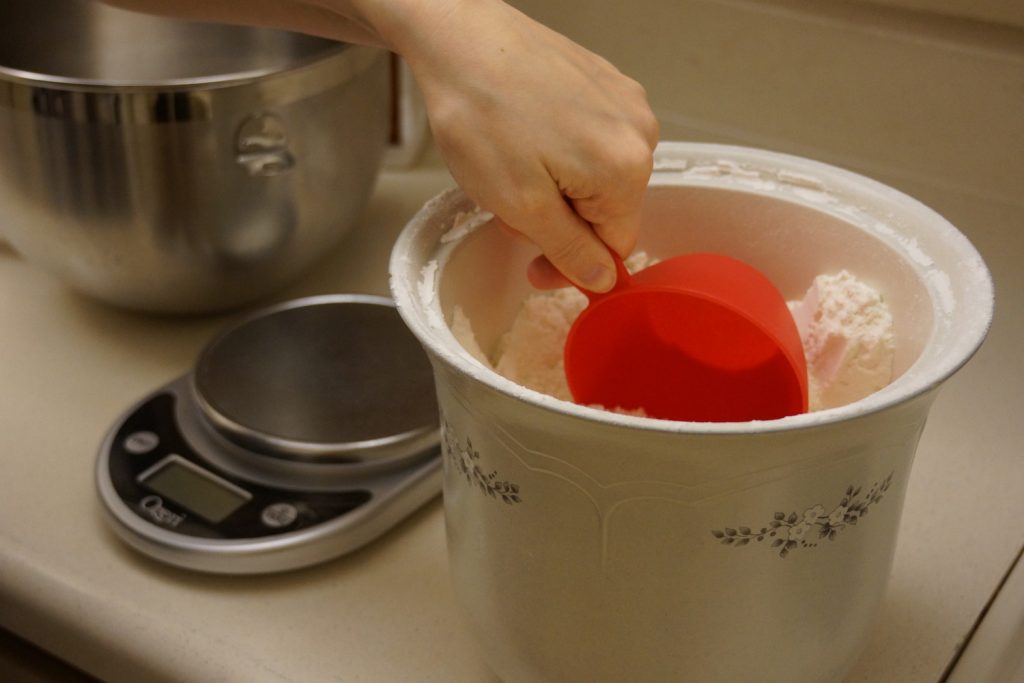
Remember how I mentioned previously that tapping the measuring cup or pressing down on the flour could lead to inaccurate measurements?
This is the prime example of that. Scooping directly from the source compacts the flour, packing it into your cup and giving you way more than you need.
When I did tried this out, my cup of flour weighed 155 grams, or 35 grams more than a standard cup of flour. That’s definitely far more flour than you need for any recipe!
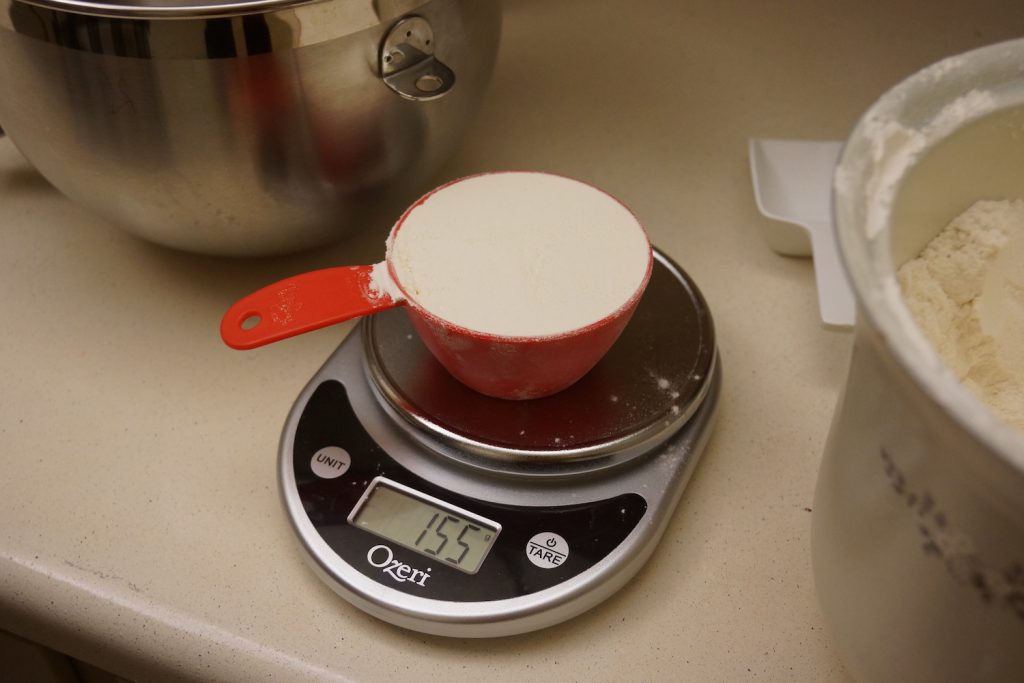
With this much extra flour, your finished product will likely have noticeable texture differences and will be too dry or dense. That’s especially true if your recipe calls for multiple cups of flour.
I hope this post has helped you understand how to scoop flour!

Leave a Reply
You must be logged in to post a comment.